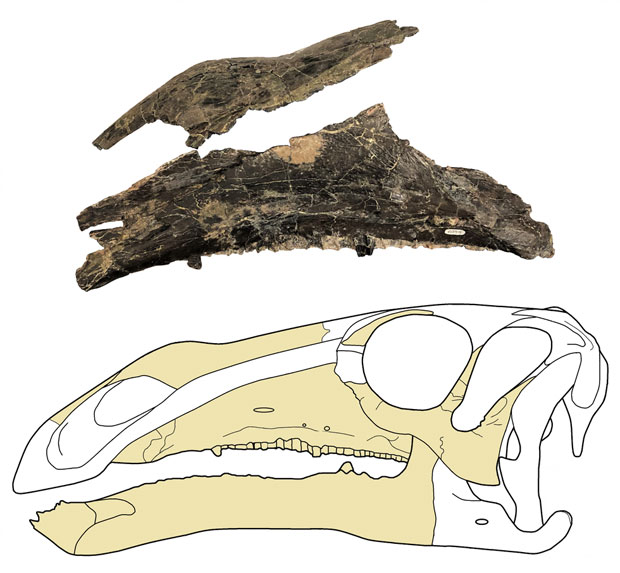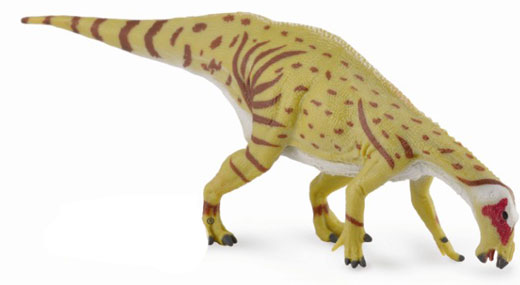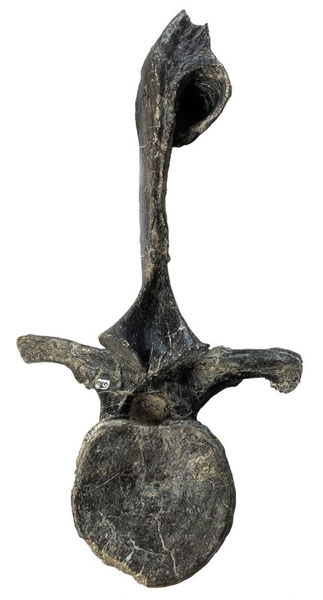Hot on the heels of the announcement of two new spinosaurids* from the Isle of Wight, a scientific paper has been published today (11th November 2021), that announces the discovery of a new genus of iguanodontid from the same stretch of coastline on the island.
The dinosaur has been named Brighstoneus simmondsi and it suggests that there are probably several different iguanodontids still awaiting discovery in the Wealden Group strata. The genus Iguanodon had been regarded as a taxonomic waste basket, extensive revision has taken place and several new genera have been erected, but in general terms, Wealden Group iguanodontian fossil material was classed into the gracile, lightly built Mantellisaurus (M. atherfieldensis) and more robust fossil bones usually classified as Iguanodon (I. bernissartensis), although other genera such as Barilium dawsoni and Hypselospinus fittoni are also known from southern England.
Analysis of fossils originally found near the village of Brighstone on the Isle of Wight in 1978 have proved sufficiently different from other iguanodontid fossil material to warrant the establishment of a new genus.

A Collaboration between the London Natural History Museum and the University of Portsmouth
Writing in the academic publication the Journal of Systematic Palaeontology, researchers from the London Natural History Museum in collaboration with the University of Portsmouth describe this new species of ornithopod and highlight the unique anatomical traits that merited the erection of a new dinosaur genus. An assessment of the dentition, including a count of the teeth present in the jaws indicated that these fossils represented something new. Careful analysis of the nasal bone by Dr Jeremy Lockwood (University of Portsmouth) and one of the authors of the scientific paper, revealed that Brighstoneus probably had a prominent, bulbous snout.

Explaining why the fossils represent a new dinosaur species, Dr Jeremy Lockwood stated:
“For me, the number of teeth was a sign. Mantellisaurus [M. atherfieldensis] has 23 or 24, but this has 28. It also had a bulbous nose, whereas the other species have very straight noses. Altogether, these and other small differences made it very obviously a new species.”
Honouring Brighstone Village and the Finder of the Fossils
Estimated to have measured around 8 metres in length and weighing around 900 kilograms, Brighstoneus simmondsi can be regarded as a mid-sized iguanodontid. The genus name honours the village of Brighstone, close to where the fossils were found and the species name is in tribute to Mr Keith Simmonds who found the fossils back in 1978.

The discovery of this new species following a reassessment of previously described fossil material suggests that there were far more iguanodontian dinosaurs in the Early Cretaceous of the UK than previously thought, and that simply assigning specimens from this period to either Iguanodon or Mantellisaurus is over simplified.
Dr Lockwood added:
“We’re looking at six, maybe seven million years of deposits, and I think the genus lengths have been overestimated in the past. If that’s the case on the island, we could be seeing many more new species. It seems so unlikely to just have two animals being exactly the same for millions of years without change.”
Co-author of the paper, Dr Susannah Maidment (London Natural History Museum), stated:
“The describing of this new species shows that there is clearly a greater diversity of iguanodontian dinosaurs in the Early Cretaceous of the UK than previously realised. It’s also showing that the century-old paradigm that gracile iguanodontian bones found on the island belong to Mantellisaurus and large elements belong to Iguanodon can no longer be substantiated.”
Fossil Bones Showing Unusual Pathology
A dorsal bone, which Everything Dinosaur team members believe was previously ascribed to Mantellisaurus but now assigned to this new genus shows some unusual pathology. The top of the neural spine is deformed and twisted over. It is not known how this trauma occurred but analysis of the bone surrounding the injury suggests that this dinosaur lived for some time after this injury took place.

Highlighting the significance of the Isle of Wight in terms of vertebrate palaeontology, Dr Lockwood commented that there were probably many more dinosaur discoveries going to be made in southern England.
To read Everything Dinosaur’s recent blog post about the naming of two new Isle of Wight spinosaurids*: Two New Spinosaurids from the Isle of Wight.

The scientific paper: “A new hadrosauriform dinosaur from the Wessex Formation, Wealden Group (Early Cretaceous), of the Isle of Wight, Southern England” is published in the Journal of Systematic Palaeontology.






Leave A Comment